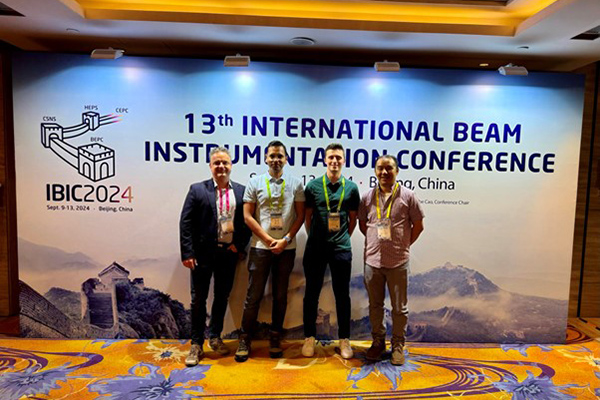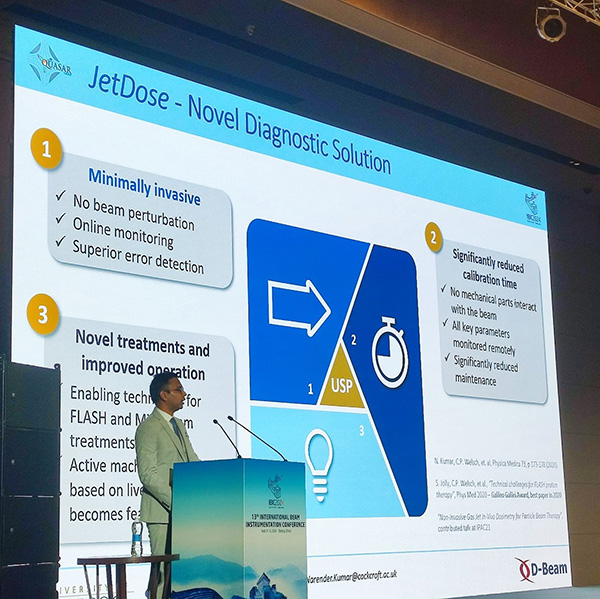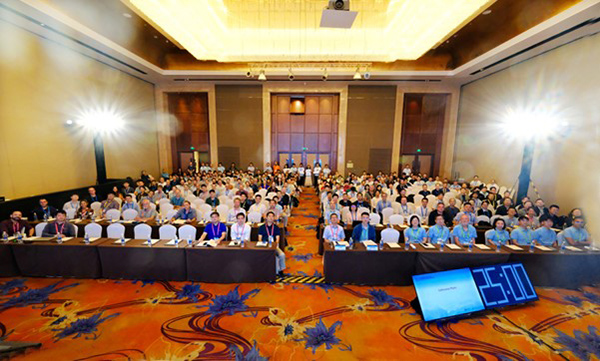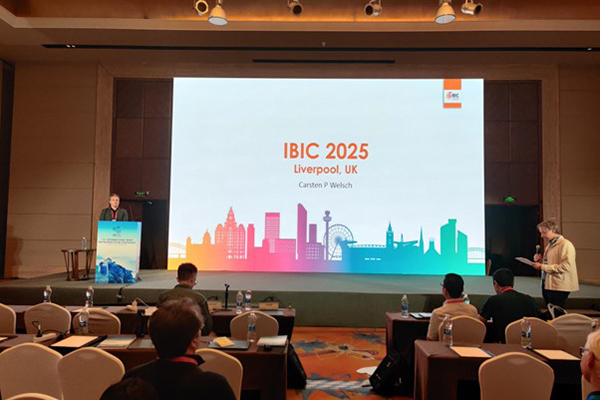QUASAR Group contributions to IBIC2024

The QUASAR Group has made major contributions to the 13th International Beam Instrumentation Conference (IBIC 2024) which took place in Beijing, China, from 9 – 13 September, 2024. The event brought together global experts in beam instrumentation to discuss cutting-edge diagnostics and measurement techniques. The 3.5-day conference featured tutorials, invited talks, an industry exhibition and interactive poster sessions.
Organized by the Institute of High Energy Physics (IHEP), China’s largest particle physics lab, the conference also included tours of the HEPS construction site and the BEPCII tunnel.
Several members of the QUASAR Group attended this important event and contributed to the scientific program, showing their latest R&D results.

Dr Narender Kumar discussed the diagnostic challenges in the field of medical accelerators and in particular high dose rate treatment modalities such as proton beam FLASH therapy.
Dr Narender Kumar contributed a talk on ‘Transverse beam profile measurements with gas jet in-vivo dose profiler for medical accelerators', where he discussed the diagnostic challenges in the field of medical accelerators and in particular high dose rate treatment modalities such as proton beam FLASH therapy. The QUASAR Group’s novel diagnostic solution JetDose was presented as a potential solution for measuring the 2D transverse dose profile. Dr Kumar presented results from proof-of-concept measurements carried out with hadron beams at the Dalton Cumbrian Facility at Whitehaven, UK, along with plans for upgrades of the monitor.
Additionally, Dr Kumar joined the JACoW editorial team, helping IBIC 2024 authors produce high-quality conference proceedings. He will lead the editorial efforts for IBIC 2025 which will take place in Liverpool, UK between 7 – 11 September 2025.

Participants at IBIC2024. (Credit: IBIC2024)
Dr Hao Zhang gave a contributed talk about the first year of operation of the beam gas curtain developed by the QUASAR Group and its international partners CERN and GSI/FAIR, in the LHC on behalf of the BGC collaboration. He presented measurement results, discussed the operational experience and future plans for the continued optimization of this monitor and the installation of a second monitor into beam two of the LHC. He also presented two posters. One on novel beam halo measurement method using a supersonic gas curtain, and a second on the use of machine learning to reconstruct beam images through an optical fibre system.

Montague King presented a novel optical beam loss monitor system. (Credit: IBIC2024)
Moreover, a novel optical beam loss monitor system, recently deployed at the CERN Linear Electron Accelerator for Research (CLEAR), was presented by PhD student Montague King. Multiple methods of extracting timing and position information from measured waveforms were investigated, and the potential impact of varying beam parameters such as bunch charge or number were analysed. This work has resulted in the development of a graphical user interface to aid operations by visualizing the beam losses and their positions in real time.

Prof Carsten Welsch presented a talk about the upcoming IBIC2025, which will be held in Liverpool. (Credit: IBIC2024)
Prof Carsten P Welsch was invited to chair the session on Beam Position Monitors. He also delivered an engaging talk on the final day of the conference about IBIC 2025 in Liverpool, inviting delegates to contribute to next year’s event. He said: “IBIC is the annual gathering of the world’s leading experts in beam instrumentation and crucial for an advancement in this important field. We are delighted to host this conference in Liverpool next year and look forward to welcoming experts from all around the world in England’s North-West.”
More information about IBIC 2024 can be found on the conference website.